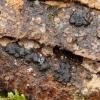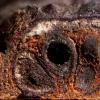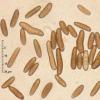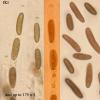
29-12-2025 17:44
Isabelle CharissouBonjour,J'aimerais savoir si d'autres personnes au

29-12-2025 17:12
 Bernard CLESSE
Bernard CLESSE
Bonjour à toutes et tous,Pourriez-vous m'aider à

12-11-2021 00:03
Lepista ZacariasHi everybody,A week ago in my fiels trip I noticed

29-12-2025 17:01
Gernot FriebesHi,I'm looking for help with this hyphomycete with

29-12-2025 08:30
Hello.A tiny ascomycete sprouting under Juniperus

29-12-2025 10:15
Hulda Caroline HolteHello, I found and collected this propoloid ascom

29-12-2025 09:38
Oskari VirtanenHi,could anyone help me identify this, I suspect P

28-12-2025 12:08
Margot en Geert VullingsThis possible Karstenia was found on the bark of d
Hi to all
These pulvinate erumpent stromata grew on corticated wood of Quercus robur. The very polymorphic and aberrant ascospores are mostly in 4-spored asci. It could be the Lopadostoma dryophilum of the recent paper of Jaklitsch, Fournier. Rogers and Voglmayr?
Thanks again
Hi Enrique,
Have you read the last paper in Persoonia 32 ?
Alain
Hi Alain
Yes. I have the paper. I have doubts because 'my' stromata have a reddish tissue between the perithecia and the asci are mostly narrower and 4-spored
Thanks!
Yes, and ascospores also don't fit with described species.
You should contact Jacques or Walter...
Alain

the second photo shows some white tissue above the perithecia, thus I think that L. dryophilum can be ruled out.
It should be assessed if all asci are definitely 4-spored, which would be highly distinctive, or if only a variable percentage of asci are fortuitously 4-spored. Such asci are more frequent in hardly mature perithecia and may be responsible for abnormal ascospores. Enrique, try to find 8-spored asci and make measurements of ascospores, their length range should be smaller and more informative.
Cheers,
Jacques

Je te serais reconnaissant recevant une copie de l'article concerné.
Amitiés,
Bernard
Hi to all
Jacques, je vais t'envoyer mon materiel avec l'autre Lopadostoma similaire au gastrinum, avec blanchatre endostroma, que nous avions trouvé sur Quercus ilex.
Amitiés

envoie moi les deux, c'est vraisemblablement la même espèce.
Merci
Jacques




